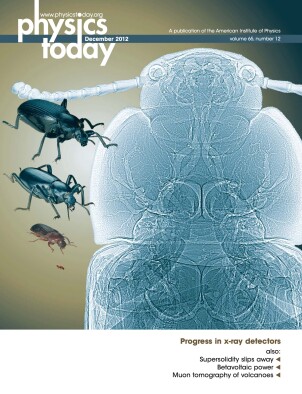Ultracold chemistry in supersonic beams
DOI: 10.1063/PT.3.1811
Ultracold chemistry in supersonic beams. When two atoms or molecules interact at very low collision energies and therefore very cold effective temperatures, the reactants’ de Broglie wavelengths become comparable to their separation. In that regime, theory says the classical notion of bouncing billiard balls breaks down; instead, one reactant can tunnel quantum mechanically—through an angular-momentum or energy barrier, for example—to chemically react with the other. But the experimental realization of such quantum effects lags far behind the theory, largely because of the difficulty of cooling neutral atoms and molecules. So quantum chemists make fast molecular beams of different species by letting high-pressure gas adiabatically expand into vacuum through a small orifice. Researchers have set up reactive encounters by intersecting two such internally cold molecular beams. In that way, temperatures as low as 5 K have been reached, with hints of quantum behavior. Now a group of chemical physicists at the Weizmann Institute of Science in Israel have broken through to 10 mK and have seen clear quantum resonances. The trick? A beam of one species is magnetically curved to merge with a beam of the other species; in a comoving frame, the two reactants are practically motionless. The team looked at two systems: excited metastable helium in one beam and either molecular hydrogen or argon in the other. At ultralow energies, they saw well-resolved quantum-enhancement peaks in the reaction rates plotted against collision energy, for a process called Penning ionization. According to the group, the method should be applicable to many chemical reactions. (A. B. Henson et al., Science 338, 234, 2012.)
